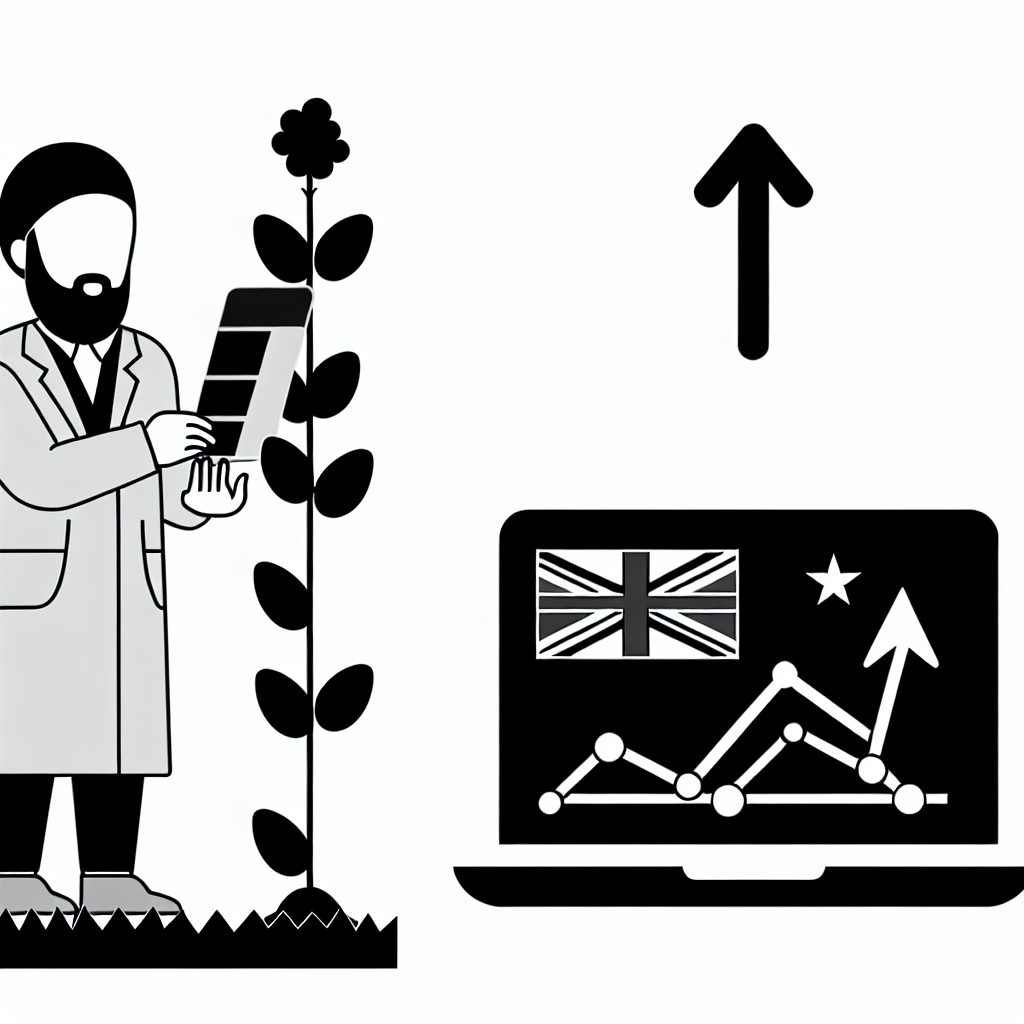New Zealand’s Wine Industry and Its Economic Significance
Overview of the Wine Industry in New Zealand
New Zealand has established itself as a prominent wine producer globally.
The country produces a diverse range of wines including Sauvignon Blanc and Pinot Noir.
Winemakers like Stonebridge Estate and Willow Creek Vineyards have gained international acclaim.
Additionally, the wine industry benefits from New Zealand’s unique climate and terroir.
Regions such as Marlborough, Central Otago, and Hawke’s Bay lead wine production.
These areas provide conditions ideal for growing high-quality grape varieties.
Economic Impact of the Wine Sector
The wine industry significantly contributes to New Zealand’s economy.
It generates billions of dollars in export revenue each year.
Moreover, it supports thousands of jobs across viticulture, production, and tourism.
Wineries like Green Valley Vineyards employ many skilled workers nationwide.
Wine tourism attracts international visitors, boosting local businesses and regions.
Events such as the Canterbury Wine Festival further showcase the industry’s growth.
Significance to Rural Communities
Many rural communities depend on vineyards for economic sustainability.
These areas benefit from infrastructure investments linked to the wine sector.
For example, the Nelson region has seen increased development thanks to vineyards.
Personalized Career Consulting
Unlock your potential with expert career advice tailored to your goals. Get personalized guidance and actionable steps toward your dream career in New Zealand.
Get StartedAdditionally, the industry fosters community engagement and cultural identity.
It creates opportunities for education and collaboration among local stakeholders.
Prospects for Future Growth
The New Zealand wine industry aims to expand its global market presence.
Innovations in winemaking techniques continue to enhance wine quality.
Companies like Treetop Estates are investing in sustainable practices and technology.
Furthermore, niche markets and organic wines offer new avenues for growth.
Collectively, these factors highlight the industry’s enduring economic importance.
The Role of Soil Quality in Grapevine Health and Wine Quality
Impact of Soil on Grapevine Growth
Soil quality directly influences grapevine growth and development.
Healthy soil provides essential nutrients for strong vine roots.
Proper soil drainage prevents root diseases and promotes vigor.
Winemakers like Emma Lawson emphasize soil’s role in vine resilience.
Additionally, soil structure affects water retention and aeration.
These factors shape the vine’s ability to absorb water and nutrients efficiently.
Soil Nutrients and Their Effect on Wine Flavor
Soil composition significantly impacts grape flavor profiles.
Transform Your Career with a Professional CV and Cover Letter
Stand out to employers with an ATS-optimized resume and tailored cover letter designed to match your dream role. Let us craft your job application materials for success!
Get StartedSpecialists like Dr. Marcus Bennett analyze soil minerals unique to each vineyard.
For instance, limestone-rich soils often yield wines with distinct crisp acidity.
Conversely, volcanic soils contribute to complex tannin structures.
Winemakers adjust vineyard practices based on specific soil nutrient analysis.
This tailoring enhances desired flavor characteristics in New Zealand wines.
Microbial Life within the Soil
Microorganisms in soil play a vital role in nutrient cycling.
Microbial diversity supports vine health by breaking down organic matter.
Scientists such as Lily Tan investigate how microbes influence plant immunity.
Furthermore, healthy microbial communities improve soil fertility sustainably.
They contribute indirectly to consistent grape quality year after year.
Sustainable Soil Management Practices in New Zealand Vineyards
Experts recommend sustainable soil management to maintain vineyard productivity.
These practices include cover cropping to prevent erosion and enhance soil organic matter.
Soil scientist Daniel Ng collaborates with vineyard managers to monitor soil pH and nutrients.
Regular soil testing guides amendments that improve soil structure and fertility.
Boost Your Career with a Standout LinkedIn Profile
Attract recruiters and expand your network with a fully optimized LinkedIn profile tailored to highlight your strengths and professional goals. Let your profile open doors to new opportunities!
Get OptimizedAdditionally, minimizing chemical input preserves beneficial soil organisms.
Such integrated approaches safeguard long-term grapevine health and wine excellence.
How Soil Scientists Analyze Vineyard Soils to Optimize Grape Growing Conditions
Initial Soil Assessment Techniques
Soil scientists begin by collecting soil samples from multiple vineyard locations.
They analyze texture, structure, and drainage properties carefully.
Moreover, they examine soil pH to determine acidity or alkalinity.
This information guides decisions about grape variety suitability.
Laboratories such as TerraTest Ltd. in Marlborough provide precise nutrient profiling.
Nutrient Analysis and Amendments
Experts measure essential nutrients like nitrogen, phosphorus, and potassium.
Soil scientist Emily Turner often recommends organic matter additions to improve fertility.
Furthermore, micronutrient levels such as zinc and magnesium are assessed.
Depending on results, targeted fertilization plans are developed.
These amendments help vines absorb nutrients efficiently and promote growth.
Soil Moisture and Water Retention Studies
Monitoring soil moisture supports optimal irrigation scheduling.
Specialized sensors track water availability in soils across vineyards.
As a result, farmers like Liam Henderson optimize water use sustainably.
Additionally, soil scientists assess permeability to prevent root waterlogging.
This prevents vine stress and maintains consistent grape quality.
Microbial Activity and Soil Health Evaluation
Microbial communities enhance soil fertility by cycling nutrients.
Experts from GreenVine Analytics collect microbial samples for DNA sequencing.
Healthy microbial populations improve soil structure and disease resistance.
Consequently, this supports robust vine growth through natural biological processes.
Adapting Soil Management to Vineyard Microclimates
Soil scientists study how topography affects local microclimates in vineyards.
Variations in sun exposure and wind alter soil temperature and moisture.
Therefore, experts like Dr. Rachel McAllister create site-specific soil solutions.
These customized practices enhance grapevine resilience and fruit development.
Ultimately, precision soil science boosts both yield and wine quality.
You Might Also Like: Why Food Technologists Are Vital to NZ’s Agricultural Economy
The Impact of Soil Composition on Grape Characteristics and Flavor Profiles
Role of Soil Minerals in Grape Development
Soil minerals play a crucial role in shaping grapevine health and growth.
Moreover, these minerals influence the accumulation of sugars and acids in grapes.
For example, calcium improves vine stability while potassium regulates fruit ripening.
Vintners like Oliver Mason from Marlborough emphasize mineral balance for premium wines.
Soil Texture and Water Retention Effects
The texture of soil affects how much water the roots can access.
Clay soils retain more water, which can lead to fuller-bodied grapes.
Conversely, sandy soils drain quickly, stressing vines and enhancing flavor concentration.
Winemaker Sarah Knight explains that controlled water stress intensifies grape flavor complexity.
Impact of Soil pH on Nutrient Uptake and Taste
Soil pH determines the availability of essential nutrients to grapevines.
Slightly acidic soils help vines absorb nitrogen and magnesium effectively.
These nutrients contribute to vibrant acidity and balanced tannins in wine.
Experts like Dr. Lucas Morrell work with vineyards to optimize pH for desired flavor outcomes.
Microbial Activity and Its Influence on Flavor Profiles
Healthy soil microbes interact with grapevine roots to enhance nutrient cycling.
This biological activity supports vine resilience and fruit quality.
In addition, certain microbes promote the development of unique aroma compounds in grapes.
Research by the Southern Hills Wine Institute highlights these microbial impacts on terroir expression.
Variations in Soil Composition Across New Zealand Wine Regions
New Zealand features diverse soils, from volcanic to sedimentary origins.
Each soil type contributes distinct characteristics to grape varietals grown there.
For instance, Central Otago’s schist soils impart intense fruit flavors and vibrant acidity.
Meanwhile, soils in Hawke’s Bay promote richness and complexity in Bordeaux-style blends.
Winery owner Tom Fraser credits soil diversity for the country’s wide-ranging wine styles.
Techniques Soil Scientists Use to Assist Vineyards
Soil scientists analyze nutrient content, texture, and water-holding capacity regularly.
They recommend targeted soil amendments to correct imbalances and enhance vine performance.
Additionally, adopting cover crops improves soil structure and organic matter levels.
Consultants like Emily Carter collaborate closely with winemakers to tailor soil management.
This partnership helps maximize grape quality and achieve distinctive flavor profiles.
Learn More: The Role of Marine Biologists in Preserving NZ’s Coastal Life
Techniques Soil Scientists Use to Monitor Soil Moisture and Nutrient Levels
Advanced Soil Moisture Monitoring Methods
Soil scientists rely on various advanced technologies to measure soil moisture accurately.
For instance, they use Time Domain Reflectometry (TDR) sensors.
These sensors provide precise moisture readings.
They send electromagnetic pulses through the soil to detect water content levels.
Moreover, capacitance sensors measure dielectric constants to estimate moisture efficiently.
Remote sensing technology also plays a crucial role by offering aerial views of vineyard moisture patterns.
Additionally, satellite data helps experts track changes over large vineyard areas continuously.
To complement these methods, soil scientists conduct manual measurements using tensiometers in targeted zones.
These combined approaches ensure Nathan Cole from TerraSoil Analytics provides detailed moisture analyses for wineries.
Techniques for Assessing Soil Nutrient Levels
Monitoring soil nutrients involves collecting soil samples systematically across vineyards.
Dr. Elise Mariner of GreenRoots Labs emphasizes the importance of laboratory soil testing for nutrient analysis.
These tests determine levels of nitrogen, phosphorus, potassium, and micronutrients essential for vine health.
Field testing kits also enable on-site assessments of soil pH and electrical conductivity.
Such measurements help understand nutrient availability and soil salinity.
Furthermore, soil scientists apply ion-selective electrodes to detect specific nutrient ions precisely.
They analyze organic matter content to evaluate nutrient retention capacity effectively.
This data supports Precision Viticulture by optimizing fertilizer application and improving sustainability.
Data Integration and Soil Health Management
After collecting moisture and nutrient data, soil scientists integrate it to inform vineyard management.
GIS mapping tools visualize spatial variability within vineyard soils extensively.
Dr. Fiona Hartley leads regional projects that combine sensor data with weather and crop models.
This integration aids in predicting optimal irrigation schedules and nutrient delivery.
Moreover, it supports decisions that prevent overwatering and nutrient runoff into nearby waterways.
Advanced analytics help companies like TerraVine Consultancy tailor custom soil management plans.
Consequently, winemakers can sustainably enhance grape quality through precise soil health adjustments.
Uncover the Details: Wildlife Researchers in NZ: Careers Dedicated to Conservation
Collaboration between Soil Scientists and Viticulturists to Enhance Sustainable Practices
Integrating Soil Science into Vineyard Management
Soil scientists and viticulturists in New Zealand work closely to optimize vineyard health.
They share data on soil composition, moisture, and nutrient levels for precise interventions.
This collaboration improves grape quality while reducing resource waste.
For example, soil expert Emma Rutherford partners with Nelson Vineyards to tailor soil treatments.
She analyzes soil samples and advises on amendments that promote vine growth sustainably.
Innovative Techniques Developed from Cooperation
Together, soil scientists and growers develop new methods to monitor soil health continuously.
These include deploying sensors that provide real-time data on soil moisture and temperature.
Additionally, they apply advanced mapping techniques to identify vineyard variability zones.
Such innovation helps viticulturists like Mark Bell from Marlborough Vineyards make informed decisions.
As a result, irrigation and fertilization become more targeted and environmentally friendly.
Benefits of Sustainable Soil Management
Sustainable practices foster long-term vineyard productivity and environmental protection.
Moreover, healthy soils improve vine resilience against pests and climatic stressors.
Vintners like Olivia Thompson credit soil science collaboration for consistent vintage quality.
The synergy of soil science and viticulture drives New Zealand’s wine industry forward.
Shared Goals and Ongoing Research
Researchers and growers aim to minimize chemical inputs while maximizing soil biodiversity.
Institutions like the New Zealand Soil Institute support joint projects with vineyard operators.
For instance, recent studies by Dr. Liam Fraser focus on organic soil amendments in Central Otago.
Such efforts ensure sustainable wine production adapts to future environmental challenges.
Discover More: Marine Biologists in NZ: Protecting the Future of Our Oceans

Case Studies Showcasing Improvements in Vineyards Due to Soil Science Applications
Enhancing Soil Structure at Riverstone Vineyards
Riverstone Vineyards partnered with soil scientist Amelia Grant to assess their compacted soils.
Her team used advanced soil penetration tests to identify the most affected blocks.
Consequently, they applied deep ripping techniques that improved aeration and root growth.
Additionally, organic matter amendments increased water retention and microbial health.
As a result, vine vigor improved significantly within the next growing season.
Furthermore, grape quality showed measurable increases in sugar content and flavor nuances.
Optimizing Nutrient Management at Southern Cross Estate
Southern Cross Estate worked with Dr. Marcus Chen to refine their nutrient application strategies.
He conducted soil nutrient mapping to pinpoint deficiencies across the vineyard.
Subsequently, precision fertilization targeted specific areas, reducing waste and costs.
Moreover, foliar testing guided timely micronutrient sprays that supported vine health.
The vineyard saw increased yields and more consistent fruit maturity after implementation.
Importantly, the environmental impact of fertilizing practices was reduced substantially.
Improving Water Use Efficiency at Bluehaven Wines
Bluehaven Wines enlisted the expertise of soil hydrologist Laura Mitchell to address irrigation challenges.
Her team assessed soil moisture levels using sensor networks across multiple blocks.
Consequently, they redesigned irrigation schedules to match vine water demand precisely.
This approach led to substantial water savings and minimized runoff into nearby waterways.
Additionally, improved soil moisture balance promoted healthier root systems and stronger vines.
Overall, the winery reported more stable grape quality and reduced water costs.
Restoring Degraded Soils at Lakeside Vineyard
Lakeside Vineyard faced soil degradation from previous over-cultivation practices.
Soil scientist Nicolas Fairchild developed a regenerative plan focused on cover cropping.
Cover crops improved soil organic carbon levels and prevented erosion effectively.
Moreover, they enhanced beneficial microbial activity essential for nutrient cycling.
Within two years, soil health indicators showed marked improvement across all tested sites.
Consequently, vine productivity and resilience to weather extremes increased noticeably.
Impact of Soil Science Innovations Across New Zealand Vineyards
These case studies illustrate the critical role soil science plays in vineyard success.
Innovative soil management practices lead to healthier vines and superior wine quality.
Therefore, many New Zealand wineries now routinely engage soil scientists for expert guidance.
Soil science is fundamental to sustainable and profitable viticulture in New Zealand.
Future Trends in Soil Science That Could Revolutionize New Zealand’s Wine Production
Advanced Soil Monitoring Technologies
Innovative sensor technology is transforming how vintners monitor soil health.
Companies like TerraSense Analytics develop smart sensors that provide real-time soil data.
These devices track moisture levels, nutrient content, and microbial activity precisely.
Consequently, vineyard managers respond faster to soil changes and improve vine health.
Additionally, drones equipped with multispectral cameras contribute detailed soil mapping.
Together, these technologies reduce guesswork and boost sustainable practices.
Precision Agriculture and Data Integration
Precision soil management tailors treatments to specific vineyard zones.
Soil scientists now combine satellite data with ground sensors for comprehensive analysis.
Vinology Insights, a Christchurch-based startup, pioneers software integrating diverse soil inputs.
This integration allows for customized fertilization and irrigation plans per block.
Therefore, water use decreases while grape quality consistently improves.
Furthermore, data-driven decisions support environmental compliance and certification efforts.
Microbial Soil Amendments and Biofertilizers
Researchers discover soil microbes that enhance vine resilience and flavor profiles.
The Biovista Lab in Marlborough specializes in developing microbial blends for vineyards.
These biofertilizers stimulate nutrient uptake and suppress soil-borne diseases effectively.
As a result, chemical inputs decline, benefiting ecosystem health around vineyards.
Moreover, healthier soils foster richer terroir expression in wine production.
Regenerative Soil Practices and Carbon Sequestration
Soil scientists advocate regenerative methods that restore organic matter naturally.
Planting cover crops and reducing tillage improve soil structure and biodiversity.
New Zealand’s Vineyard Collective champions these techniques across regions like Hawke’s Bay.
These efforts increase soil carbon storage, mitigating climate change impacts significantly.
In turn, wineries gain carbon credits and improve their environmental reputations.
Regenerative approaches promise a sustainable future for New Zealand winemakers.
Collaborative Research Driving Innovation
Institutions like Lincoln University drive soil science advancements for viticulture.
They partner with family-owned vineyards such as Adams Estate to pilot new technologies.
Regular knowledge exchange and field trials accelerate adoption of innovative practices.
This collaboration ensures solutions remain practical and tailored to local conditions.
Consequently, New Zealand remains a global leader in sustainable wine production techniques.
Challenges Soil Scientists Face in Adapting to Climate Change Within the Wine Industry
Impact of Changing Weather Patterns on Soil Health
Soil scientists must address unpredictable rainfall patterns affecting vineyard soil moisture.
Increased temperatures accelerate soil organic matter decomposition.
This process reduces nutrient availability crucial for vine growth.
Drought incidents cause soil compaction and reduce microbiome diversity.
As a result, maintaining soil fertility becomes increasingly complex for experts like Dr. Fiona MacKenzie.
Adjusting Soil Management Practices
Experts collaborate closely with wineries such as Marlborough Estate to adjust soil care.
They implement cover cropping to improve soil structure and reduce erosion.
Additionally, they promote integrated nutrient management to optimize fertilizer use.
Adopting these methods mitigates negative climate effects on soil productivity.
Yet, ongoing monitoring remains essential to adapt strategies effectively over time.
Technological Advancements and Data Challenges
Soil scientists rely on precision agriculture tools to collect detailed soil data.
For example, Gisborne-based consultancy TerraVista uses sensors and drones to monitor soils.
However, managing vast datasets demands advanced analytical skills and software.
Consequently, specialists like Lena Thompson enhance data interpretation for targeted solutions.
Despite technological progress, integrating data into practical vineyard decision-making poses hurdles.
Collaboration Between Soil Scientists, Viticulturists, and Climate Experts
Effective adaptation requires interdisciplinary teamwork across soil and climate sciences.
Soil experts work alongside viticulturists to tailor vineyard practices to evolving conditions.
They also engage climatologists to forecast regional trends impacting soil environments.
This cooperation helps wineries, including Silver Birch Vineyards, prepare resilient soil management plans.
Ultimately, shared knowledge supports sustainable wine production despite climate uncertainties.




